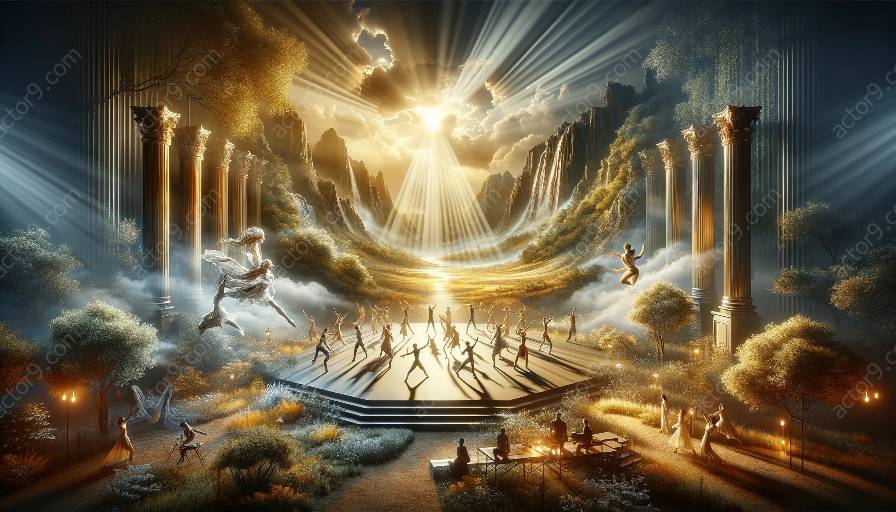Lighting in physical theatre plays a crucial role in shaping the audience's perception and experience of the performance. It has the power to manipulate time, enhance rhythm, and create immersive atmospheres that complement the movements of the performers. In this topic cluster, we'll delve into the intricate relationship between lighting design and physical theatre, exploring how it influences the audience's perception of time, rhythm, and the overall narrative.
The Role of Lighting in Physical Theatre
Physical theatre is a form of performance that emphasizes the use of the body and movement as a primary storytelling tool. It often involves the exploration of themes, emotions, and narratives through expressive movement, gestures, and non-verbal communication. Lighting in physical theatre serves as an integral component that contributes to the visual and emotional impact of the performance. It helps to accentuate the dynamics of movement, evoke moods, and guide the audience's focus, making it an essential aspect of the overall theatrical experience.
Affecting Time and Rhythm
Lighting has the ability to influence the audience's perception of time and rhythm within a physical theatre performance. The strategic use of light and shadow can create a sense of fluidity or stagnation, altering the perceived pace of the performance. By manipulating the intensity, color, and direction of light, lighting designers can synchronize the movements of the performers with the rhythm of the visual elements, resulting in a harmonious fusion of time, movement, and emotion.
Creating Immersive Atmospheres
One of the most compelling aspects of lighting in physical theatre is its capacity to create immersive atmospheres that transport the audience into the world of the performance. From stark, contrasting lighting that accentuates tension and conflict, to soft, ambient light that envelops the stage in a sense of tranquility, lighting design has the power to evoke powerful emotional responses and enhance the audience's engagement with the narrative.
Enhancing Visual Composition and Narrative
Lighting serves as a visual composition tool in physical theatre, sculpting the space and amplifying the aesthetic impact of the performers' movements. It can delineate the contours of the stage, draw attention to specific gestures, and shape the overall visual narrative. By skillfully using lighting to punctuate key moments and transitions, physical theatre productions can create visually stunning and emotionally compelling storytelling experiences.
Conclusion
Lighting's impact on time, rhythm, and perception in physical theatre is profound, shaping the audience's engagement and emotional connection with the performance. As an essential element of theatrical production, lighting design in physical theatre enriches the storytelling process, enhances the visual and emotional experience, and contributes to the creation of evocative, immersive worlds on stage.




































